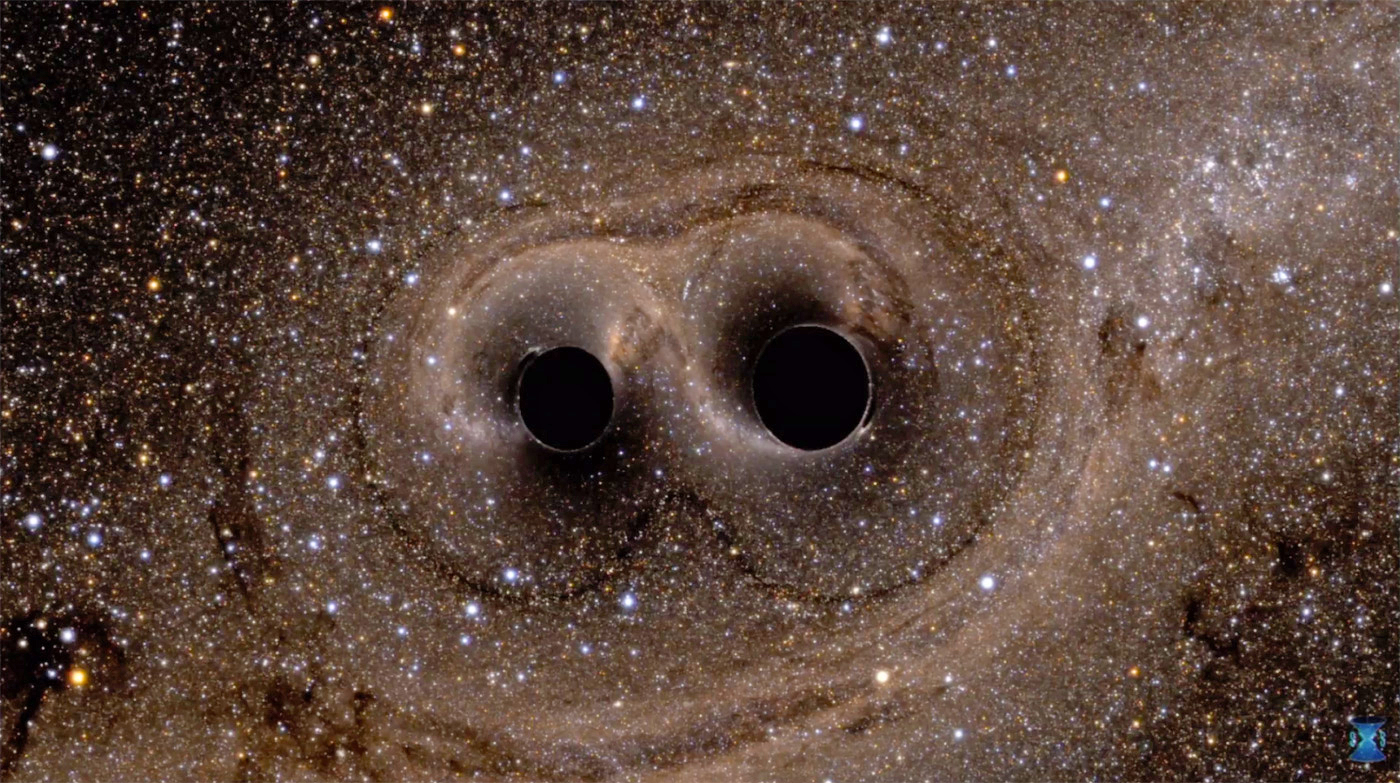Giant Step for Humankind: 'Discovery Of The Century' Validates Einstein
NEW DELHI: In a huge leap forward for science, a stunning discovery has -- for the first time -- led to the observation of the warping of spacetime through the detection of ripples in spacetime or gravitational waves. Scientists say that the first detection of these gravitational waves will usher in a new era for astronomy, with the potential to offer an insight into the Big Bang and the beginning of spacetime itself. As the world reacts to the massive discovery, India is readying itself to host the world’s third Laser Interferometer Gravitational Observatory (LIGO-India).
The discovery marks a triumph for the 1000 physicists with LIGO, a pair of gigantic instruments in Hanford, Washington, and Livingston, Louisiana.
The research, by the LIGO Collaboration, was published Thursday in the journal Physical Review Letters.
An abstract from the paper reads: “On September 14, 2015 at 09:50:45 UTC the two detectors of the Laser Interferometer Gravitational-Wave Observatory simultaneously observed a transient gravitational-wave signal. The signal sweeps upwards in frequency from 35 to 250 Hz with a peak gravitational-wave strain of 1.0×10−21. It matches the waveform predicted by general relativity for the inspiral and merger of a pair of black holes and the ringdown of the resulting single black hole. The signal was observed with a matched-filter signal-to-noise ratio of 24 and a false alarm rate estimated to be less than 1 event per 203 000 years, equivalent to a significance greater than 5.1σ. The source lies at a luminosity distance of 410+160−180 Mpc corresponding to a redshift z=0.09+0.03−0.04. In the source frame, the initial black hole masses are 36+5−4M? and 29+4−4M?, and the final black hole mass is 62+4−4M?, with 3.0+0.5−0.5M?c2 radiated in gravitational waves. All uncertainties define 90% credible intervals. These observations demonstrate the existence of binary stellar-mass black hole systems. This is the first direct detection of gravitational waves and the first observation of a binary black hole merger.”
The discovery confirms the remaining part of Albert Einstein’s theory of relativity and our understanding of gravity. Although scientists have long believed gravitational waves to exist, there had been no confirmation or proof of their existence till now. Further, the discovery allows us to observe objects and phenomena that have thus far been invisible to us, such as black holes.
This is because the waves detected by LIGO emanated from the collision of two black holes more than a billion light years away. Gravitational waves are emanated by any and all moving objects (including you!), but are difficult to detect. LIGO therefore attempted to detect the biggest of such gravitational waves -- and found those caused by the collision of two black holes. These two black holes collided 1.3 BILLION years ago, sending a shudder through the universe as they whirled together at half the speed of light and finally merged into one. The ripples in spacetime, or gravitational waves, created by the black holes finally made their way to earth just about five months ago, enabling their detection and fulfilling a four-decade quest to confirm their existence.
Just how difficult was it to detect? LIGO researchers sensed a wave that stretched space by one part in 1021, making the entire Earth expand and contract by 1/100,000 of a nanometer, about the width of an atomic nucleus.
This miniscule stretching of spacetime was possible because of ultraprecise rulers. As Science Mag explains: Two L-shaped contraptions called interferometers with arms 4 kilometers long. Mirrors at the ends of each arm form a long “resonant cavity,” in which laser light of a precise wavelength bounces back and forth, resonating just as sound of a specific pitch rings in an organ pipe. Where the arms meet, the two beams can overlap. If they have traveled different distances along the arms, their waves will wind up out of step and interfere with each other. That will cause some of the light to warble out through an exit called a dark port in synchrony with undulations of the wave.
From the interference, researchers can compare the relative lengths of the two arms to within 1/10,000 the width of a proton—enough sensitivity to see a passing gravitational wave as it stretches the arms by different amounts. To spot such tiny displacements, however, scientists must damp out vibrations such as the rumble of seismic waves, the thrum of traffic, and the crashing of waves on distant coastlines.
On September 14, 2015 -- at 9:50:45 universal time—4:50 a.m. in Louisiana and 2:50 a.m. in Washington—LIGO’s automated systems detected just such a signal. Comparisons with computer simulations then revealed that the waves had come from two objects 29 and 36 times as massive as the sun spiraling to within 210 kilometers of each other before merging. Only a black hole can pack so much mass into such a small space -- making this the first time that black holes have been detected.
As the two blackholes collided and merged, the final black hole weighed the equivalent of 62 solar masses -- losing 3 solar masses in the collision. That missing mass emanated as gravitational radiation -- that is what we have detected.
A simple explanation of the discovery is provided in the video below:
As the world reacts to the stunning discovery, India is readying itself to host the world’s third Laser Interferometer Gravitational Observatory (LIGO-India). According to media reports, Maharashtra and Madhya Pradesh are among the states shortlisted for the experiment.
This was confirmed by Prime Minister Narendra Modi who tweeted, “Hope to make an even bigger contribution with an advanced gravitational-wave detector in the country.”
The government will have to fund the 1260-crore observatory project over 15 years. The Planning Commission has cleared the project.





